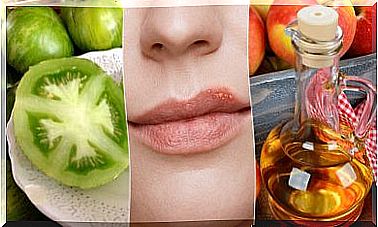Food Additives: How They Act In Our Body
The World Health Organization (WHO) defines food additives as substances that are added to food to maintain or improve its safety, texture, freshness, taste or appearance.
Some of them have been used for centuries, such as salt. This has served throughout history to preserve food. Other food additives, on the other hand, were incorporated with the emergence of modern industry.
The use of food additives is justified, in principle, by a technological necessity. The first objective is to guarantee the correct conservation of food in terms of nutritional quality, or to improve its stability.
However, these compounds are also added to make the taste or presentation of some products more attractive. In any case, at least in theory, they should always respect the recommendations of specialized entities such as FAO (Food and Agriculture Organization of the United Nations).
Classification of food additives
Food additives have different origins. Some of them are extracted from plants, others from animals or minerals, and there is a group that is produced synthetically. Today, the industry uses thousands of these substances, which are added to food for specific purposes.
The WHO and FAO differentiate these compounds into three large groups:
- Flavoring: those that are added to improve the flavor or fragrance.
- Enzyme preparations: they are natural proteins that catalyze chemical reactions and cannot be present in the final food product.
- Other additives: they are used to give color or sweeten.

Health risks in food additives
Each country has specialized agencies that are dedicated to analyzing the impact of food additives on people’s health. While at the international level, WHO and FAO are mainly in charge of this task, which have formed a joint committee of Experts on Food Additives (JECFA).
To find out whether or not these substances may be harmful to health, start from the amount of allowable daily intake. This is the amount of additive present in food or drinking water that a person can consume per day, without altering their health.
Determination of risks
The risks to which people are exposed by consuming food additives are specified in the Codex system . In order to establish and publish a specific Codex , various intergovernmental bodies are involved that carry out risk analysis in each case and prepare a list, as well as draft standards, guidelines and recommendations.
The first step in risk assessment is the identification of hazards. They are evaluated from a toxicological point of view.
What is reached after these analyzes is the amount of additive that can be consumed per day, in relation to people’s body weight, without implying risks to their health. And finally, a characterization of the dangers is carried out.
Most known adverse reactions
Food additives can produce different adverse reactions. Especially those that are used illegally, without being under the control of specialized entities. Medicine classifies these reactions into three main types:
- Allergic reactions: in these media an immune mechanism. The substance that gives rise to the allergy is usually dyes.
- Intolerance or idiosyncrasy of non-immune mechanism: they have to do with an intolerance of unknown origin that the person who uses it has.
- Endocrine or neurotoxicity disruptors: when substances interfere with the synthesis or release of neurotransmitters at the brain level.

Manifestations of adverse effects of food additives
There are a series of manifestations or diseases linked to these adverse reactions. The following list is a compilation and is not exclusive of other statements, nor conclusive about the adverse effects of these substances.
The best known effects are:
- Respiratory system conditions such as asthma and rhinitis: in general, they are triggered by the effects of dyes on the central nervous system.
- Skin problems like hives and contact dermatitis: These conditions are more related to preservatives and dyes.
- Alterations on the central nervous and endocrine systems.
To keep in mind
Food additives are present in the vast majority of the food we consume and buy on a daily basis. We should take the time to review the ingredients of our purchase, and thus ensure that they are endorsed by a recognized entity. If we think we have had an allergic reaction to a food, it is best to consult a professional.









